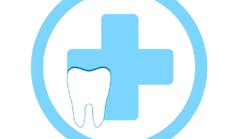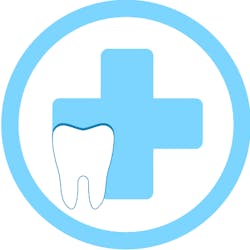Important changes and opportunities with CDT dental coding 2019
This is true for both CPR and CDT, and changes are the reason dental professionals need to stay up-to-date with their training. Unlike CPR, update training should not be every two years with coding, but rather every year because CDT codes are now updated annually, and have been since 2012.
Anyone can submit for a coding change
The Code Maintenance Committee (CMC) meets every year to discuss submissions for new and revised codes. Anyone can submit for a change, and these request may be submitted at any time. The date a request is received determines the CDT code version that may incorporate the requested action.
Each year, the committee receives 75 to 100 submissions. If all paperwork and supportive documentation is in order, submissions are then heard by the CMC. On average, 25% to 30% of the submissions pass and go into the next version of CDT. This is what happened and led to the CDT 2019 updates.
Types of changes
Creating codes to embrace new technologies, materials, and procedures can lead to earlier intervention and prevention of oral disease, and positively influence systemic health. There were a variety of actions for 2019. Not all need to be discussed in this article, though all should be included in your office training session. Here are a few highlights of the 2019 coding updates:
Diabetes screening
D0411–HbA1c in-office point-of-service testing was recently added to CDT 2018.This code reflects the increasing role dental health professionals can play beyond a patient's oral care and within overall systemic health. The code relates to an in-office measure of hemoglobin HbA1c, a blood test that provides information about a person's average circulating blood sugar levels during the previous three months.
A related new code is D0412 blood glucose level test–in-office using a glucose meter. With diabetes the most common chronic disease, knowing a patient’s HbA1c level is important. Learning the current status prior to a complex procedure may be an important indication that a procedure should not move forward. For example, a high level of glucose could lead to delayed healing and other complications following an invasive procedure.
Adjunctive code changes
Adjunctive therapy refers to any treatment that is used in conjunction with another to increase the first treatment's efficacy. In other words, it is a secondary treatment in addition to the primary therapy.
The adjunctive general services category is often searched when an appropriate code cannot be found in the other 11 sections. This section differs from the others in that it contains non-clinical and other codes that don’t fit elsewhere. Many of the codes are for care that occurs outside of the mouth or outside of the practice setting. These procedure codes recognize the nature of the support needed to complete other procedures.
These codes are often not considered for documentation, and this is based on the belief that there is no coverage. Not documenting these codes is a flawed practice because codes have a purpose in addition to third party reimbursement.
For example, federal regulations and legislation through HIPAA specifically identify CDT as the standard code set for electronic health records. As such, even if a practice chooses not to participate in third-party reimbursement, accurate codes must be used in electronic health records.
Opioid epidemic
In March 2018, the ADA released New Policy to Combat Opioid Epidemic. This policy on opioids supports mandates on prescription limits and continuing education.
A related code that is part of CDT 2019 isD9316–infiltration of sustained release therapeutic drug-single of multiple site, which was added in response to the opioid epidemic. Doctors are now using sustained-release products to reduce the use of narcotic plain medicine.
Using CDT codes on prescriptions
Ohio has addressed the opioid crisis on another level by setting new limits on prescription opioids for acute pain. Dentists in Ohio are required to adhere to their Board of Pharmacy rules for what constitutes a valid prescription. What makes this different is that the requirement for controlled substances now includes a diagnosis code.
Dentistry has yet to implement the use of diagnosis codes nationwide. This leads to the question of how a dentist can comply.
How to use CDT codes for this purpose requires an explanation and adds to record-keeping requirements in a new way. There are no CDT codes for writing prescriptions. The CDT code required for this purpose is the treatment code. For example, a prescription for opioids is written after:
• D7410 extraction, erupted tooth or exposed root
• D9110 palliative (emergency) treatment of dental pain
• D3310 endodontic therapy, anterior tooth
Only the number portion is required on the prescription, though this is limited to Ohio at this time. What is evidenced here are CDT codes not limited to third party reimbursement.
Physical therapy procedure code
The addition of D9310–temporomandibular joint dysfunction, non-invasive physical therapies is a huge departure for the CMC. For the first time, a code now exists for the physical therapy treatment of TMJ symptoms or dysfunction. This code recognizes that TMJ care goes beyond appliance therapy.
Other CDT 2019 changes create metrics
Preventive: The changes in this category are all related to space maintainers. The changes create more specificity. Rather than having a single code, there are codes to identify the entire arch. Greater specificity creates reliable metrics to accurately measure value.
Prosthetics-fixed: There are seven changes in this category. Two new codes and four revised codes describe and include retentive and clasping materials to resin-based partial dentures. This is to better describe the retentive element of the prosthesis. Two other codes were added to document when a metal substructure is added to dentures. Once again, greater specificity creates reliable metrics to accurately measure value. (Yes, I meant to repeat myself here).
Oral and maxillofacial surgery:D7283–placement of a device to facilitate eruption of impacted tooth had a change in the description. This code’s description previously specified the procedure to orthodontics, and this is not always the case. Greater specificity creates reliable metrics to accurately measure value. (Yes, I meant to repeat myself here).
Adjunctive general services: Already adjunctive services are equally important to the other categories. In addition to the codes already listed, two non-clinical codes were added, D9961–duplicate/copy patient’s records and D9990–certified translation or sign-language per visit.
What had been a single code now has three codes. Occlusal guards are not all the same. Greater specificity creates reliable metrics to accurately measure value, which is another important use of CDT codes. They are the metrics and measurements of treatment provided.
Annual CDT team training
DentalCodeology is a word that I coined. It means the study of dental codes. Accurate coding has never been as important as it is now, and will continue to be in the future.
With greater specificity comes the need for annual team training. Coding cannot be a function of the practice’s business professionals only. You may already have a well-honed office system for procedure coding that has been developed and perfected over time. Despite this, codes are updated every year. Using an old code reference is like using an expired cartridge of anesthetic. And just like with CPR, continuous training of the entire team is required. Feel free to contact me if you have any questions.
For the most current office manager headlines, click here.
For the most current dental headlines, click here.
About the Author

Patti DiGangi, BS, RDH
Patti DiGangi, BS, RDH, believes dentistry is no longer just about fixing teeth; dentistry is oral medicine, and she says it's time for dental professionals to practice it. Her new brand, Beyond Oral Health, challenges them do so. Her specialty is coding, and her efforts have assisted thousands of professionals to code more accurately and efficiently. The American Dental Association recognized DiGangi's expertise by inviting her to write chapters in its CDT 2017 Companion book and CDT 2018 Companion. She holds publishing and speaking licenses with ADA for Current Dental Terminology. DiGangi is the author of the DentalCodeology book series for dental professionals.
Updated January 13, 2020

